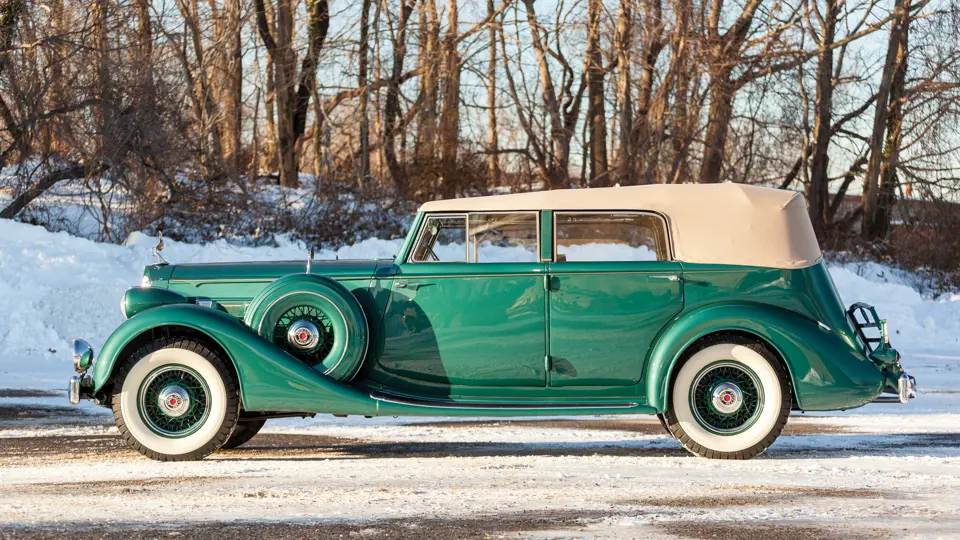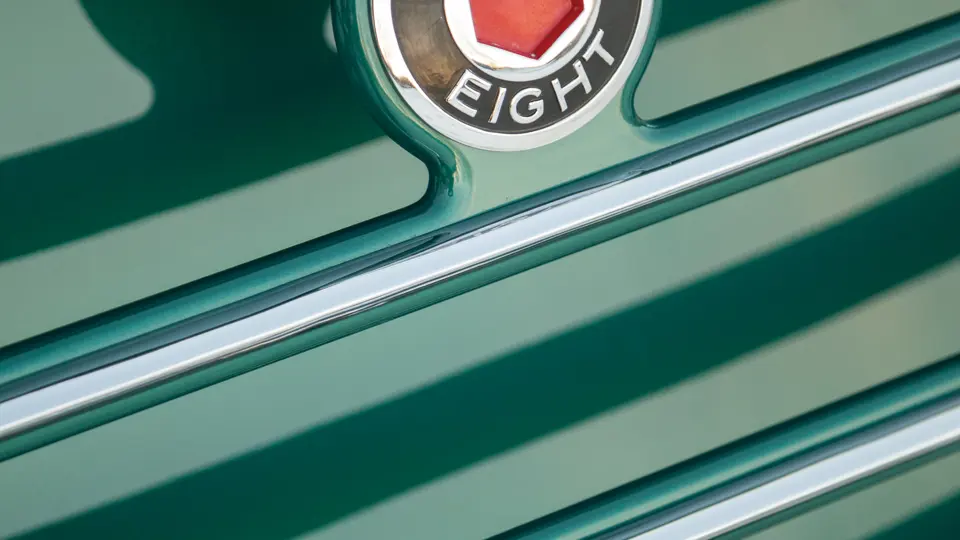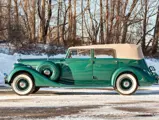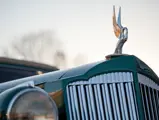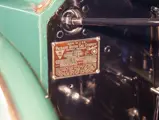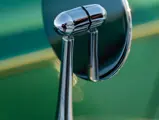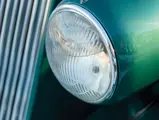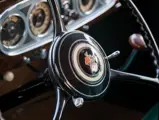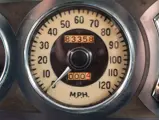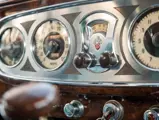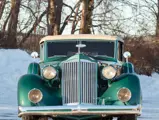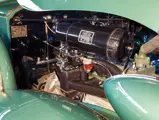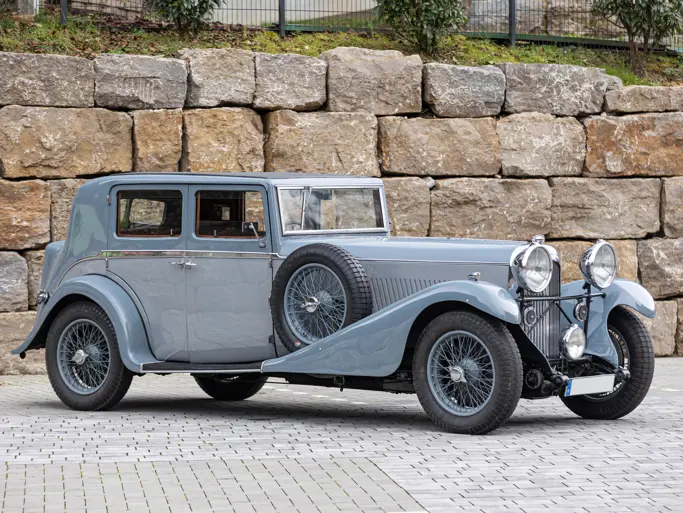Series 1402. Body Style 963. 130 bhp, 320 cu. in. L-head eight-cylinder engine, three-speed manual transmission, coil-spring independent front suspension, live rear axle with semi-elliptic leaf springs, and four-wheel mechanical brakes. Wheelbase: 139 in.
In 1936, Packard was notable in the extremes. The medium-priced One-Twenty model was selling well in its second year of production, with more than 55,000 cars providing needed cash in the Depression-weary market. At the other end of the catalogue, the Packard Twelve offered prestige, but its price range of $3,820 to $6,435 held sales below 700 units. Between these extremes, however, lay the bulk of senior Packard production, the Eight and Super Eight models. These two series offered a near-identical range of body styles, differing mostly in wheelbases and engines. Since the series were almost indistinguishable by sight, it's not surprising that the less expensive Eight outsold the Super Eight three to one.
The 1936 model year was comprised of Packard's Fourteenth Series. The Packard Eight was available in an ambitious 17 body styles on three wheelbases. The largest of these, the Series 1402, shared a 139-inch wheelbase with the Super Eight counterparts, but it used a smaller engine. Except for the convertible sedan, all Series 1402 cars seated seven or eight passengers.
The bodies for Packard’s 1936 open cars were built by Murray Corporation of America, but they wore a Dietrich emblem, which was a legacy from designer Raymond Dietrich. Dietrich had come to Detroit from LeBaron, and he had set up his own design house, Dietrich Inc., in partnership with Murray. Dietrich Inc. supplied bodies to Lincoln, Franklin, Chrysler, and Pierce-Arrow, as well as Packard. When the custom body trade ebbed in the early 1930s, Murray nudged Raymond out, but he kept the Dietrich name and used the badge on prestige models. True open cars remained in the Packard catalogue, as phaetons were in all series, but customers by far preferred the comfort and convenience of side windows. Thus, the convertible sedan, as seen here, sold in much greater numbers.
Eugene Beardslee was an engineer by training and an industrialist by profession. He was successful in both fields, enabling him to devote the second part of his lifetime to the pursuit and collection of fine classic cars, of which this Packard is an excellent example.
This Packard Convertible Sedan was acquired by Mr. Beardslee in the 1960s, and it was given a comprehensive restoration by the late Robert Turnquist’s Hibernia Auto Restoration in New Jersey about 30 years ago. Mr. Beardslee was a low-profile collector and showed his cars infrequently, but when they did enter a show field, they always judged well. This car took a Best of Show at the former Burn Prevention Foundation Concours d’Elegance at Reading, Pennsylvania. It was recently freshened by Phoenix Auto Restoration in New Jersey, where it was repainted in correct Thistle Green Dark, and it received a new top and carpets. Additional cosmetic improvements, particularly in the engine compartment, were undertaken at the same time.
The car is equipped with chrome wire wheels, dual side-mount spares with covers, a radio, and Trippe driving lights, and it is reported to run impeccably. It comes with partial documentation from the Hibernia restoration and complete records of the recent work. There is also a dossier of photographs and a New Jersey title that was issued to the car in 1967.
The car needs nothing to enter serious concours competition, whether for touring or simply for enjoyment. It is bound to please a new owner.
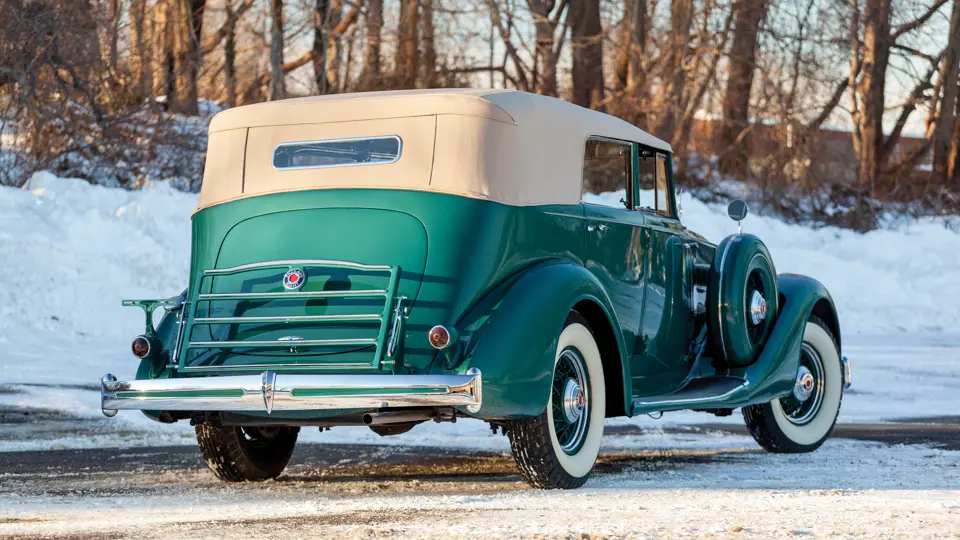
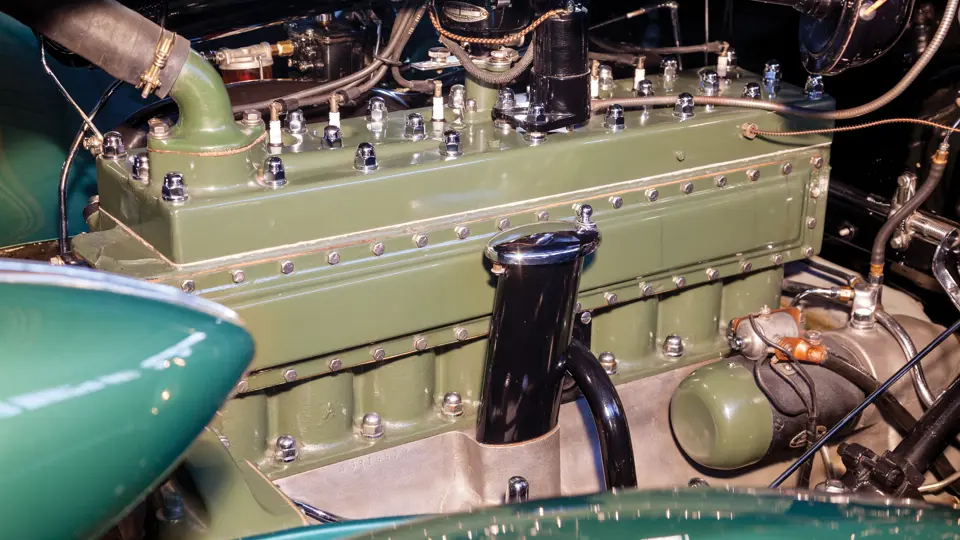


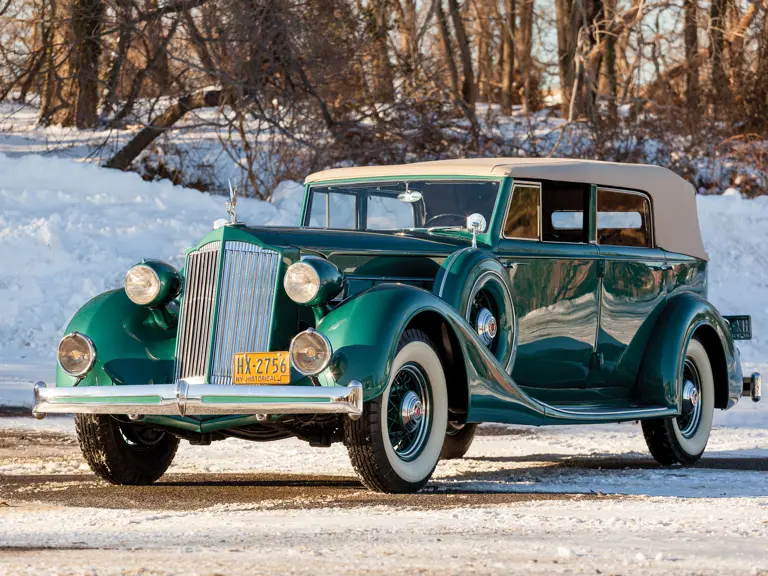
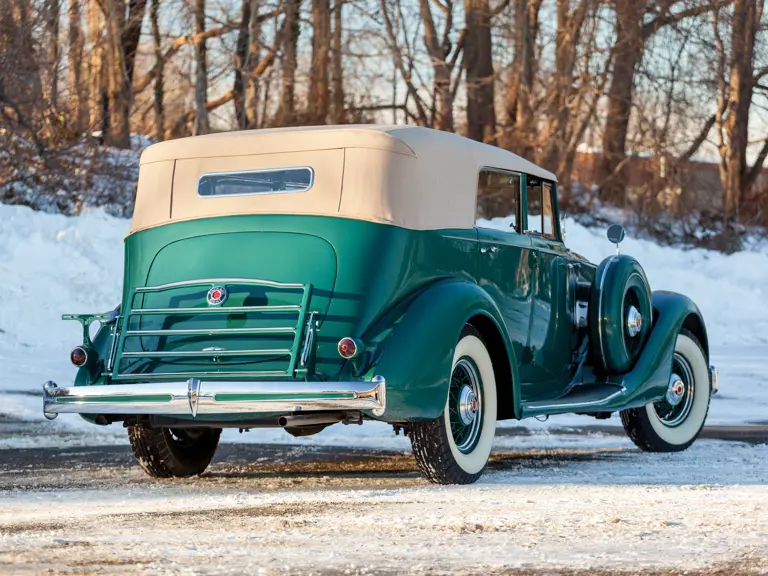

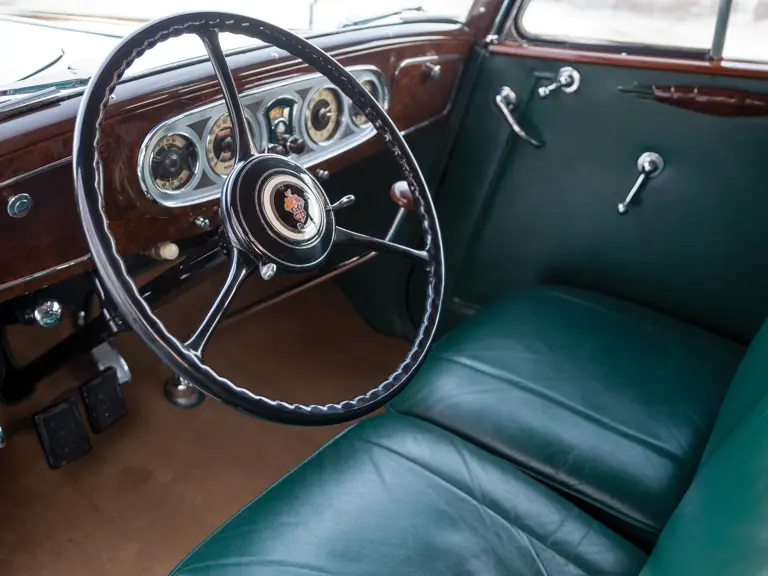
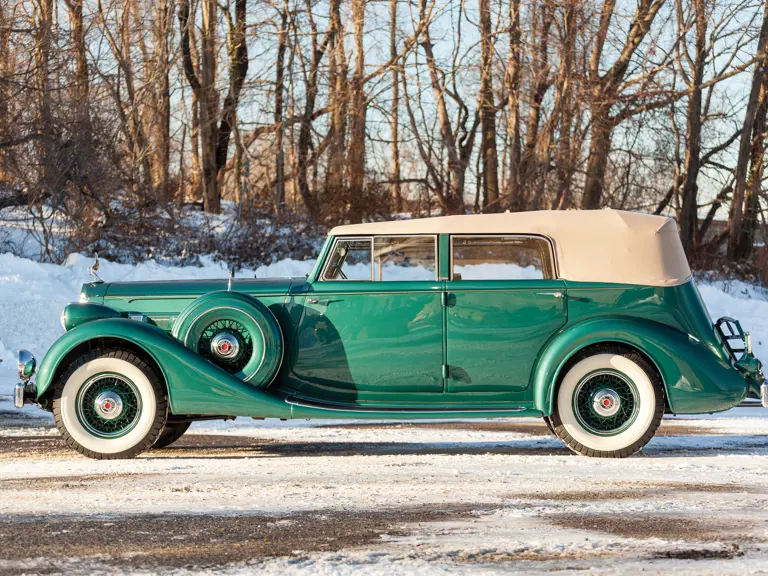

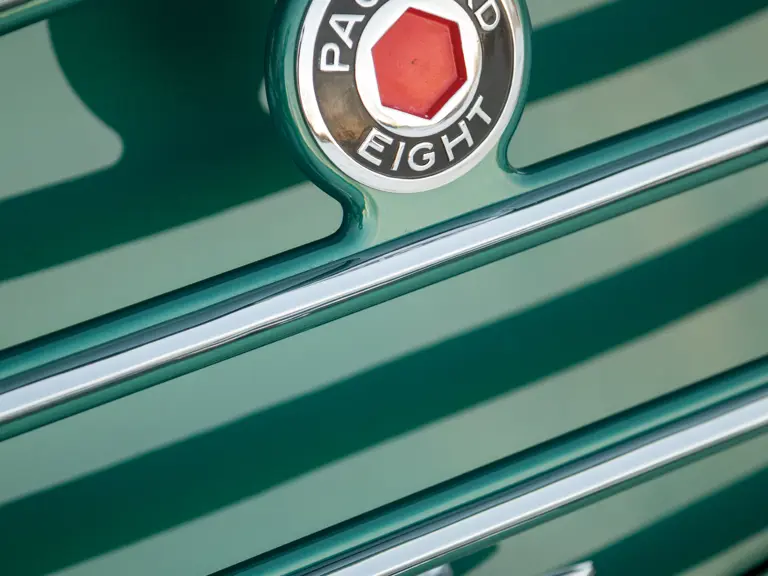
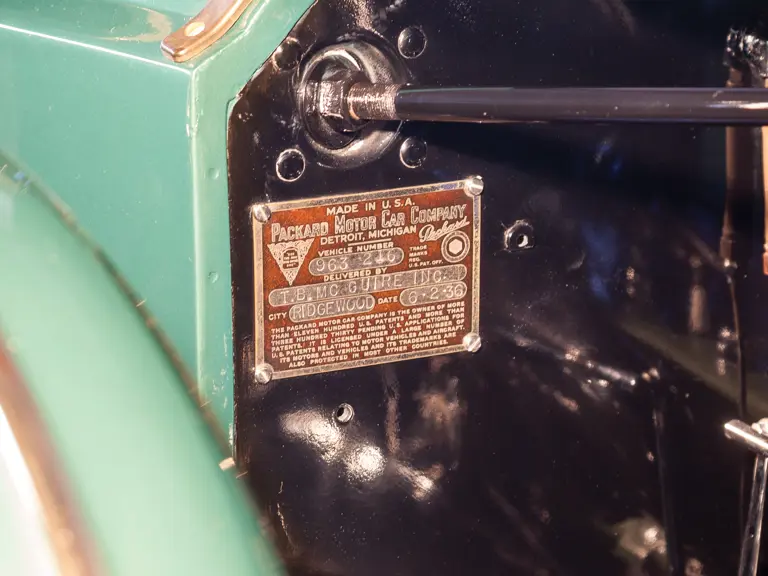
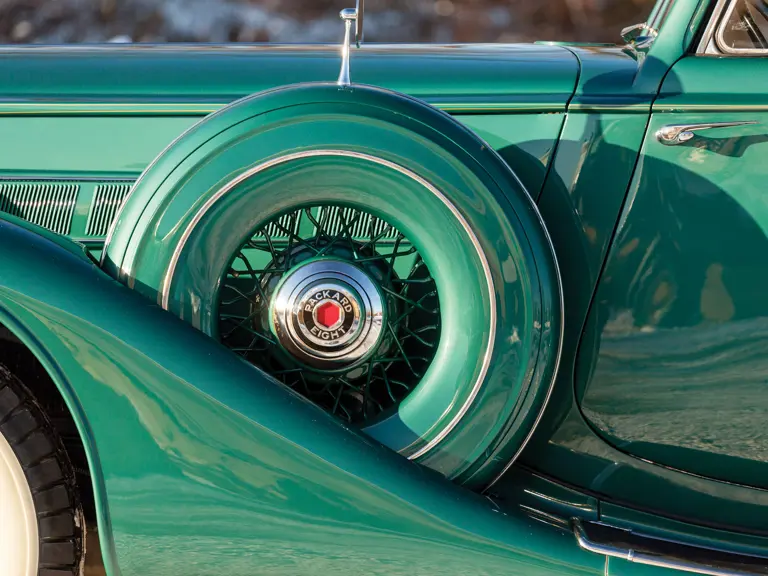
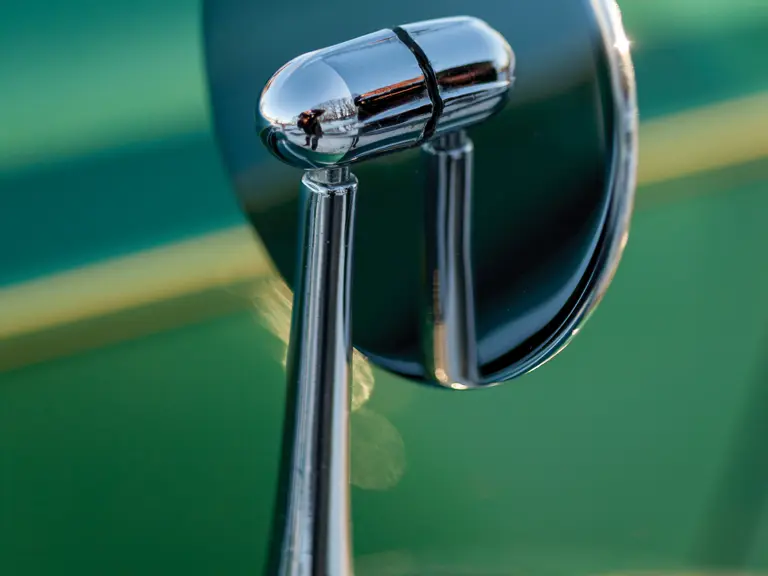
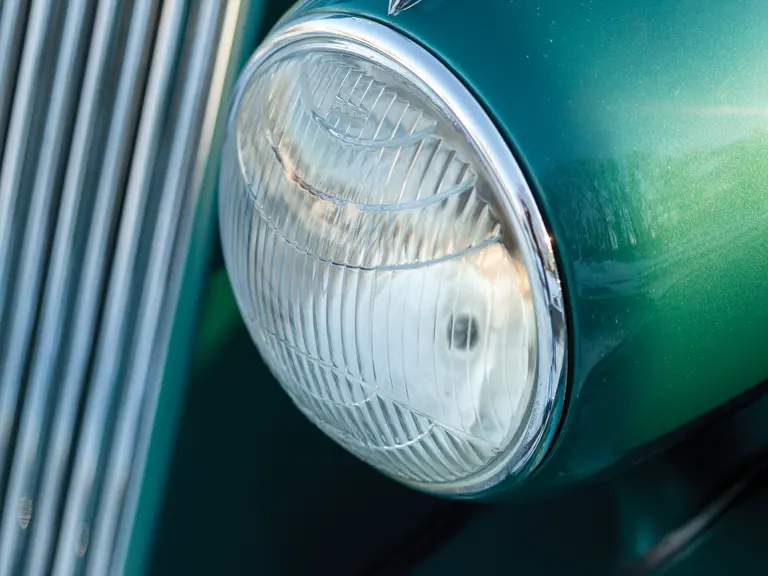
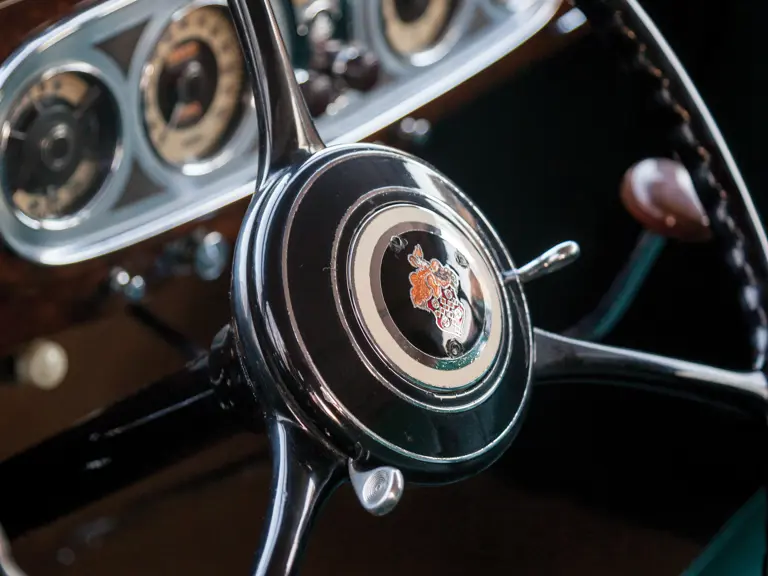
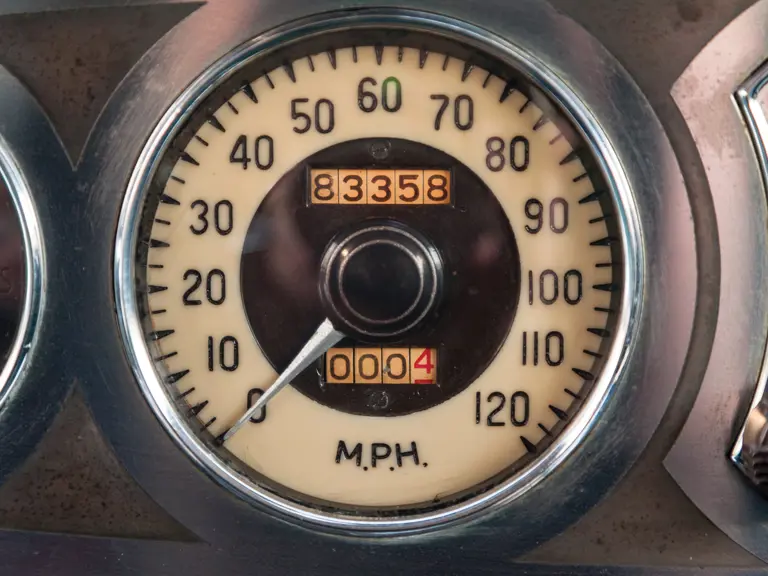
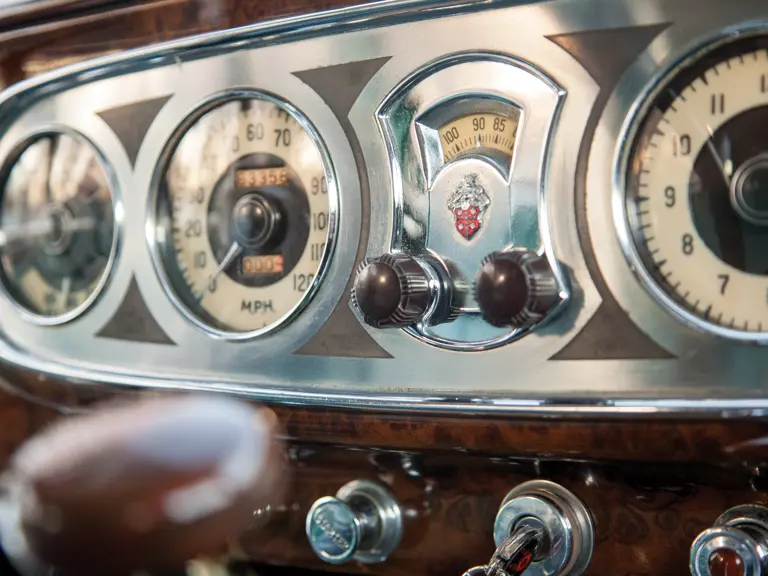
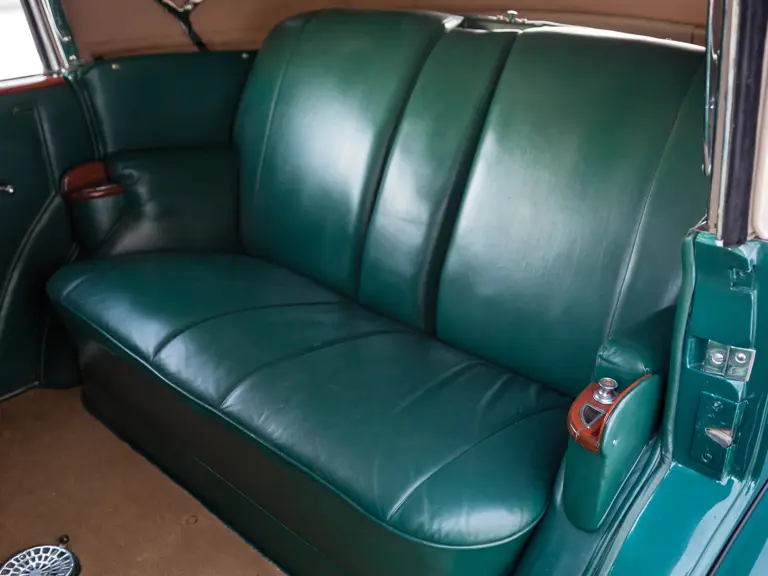
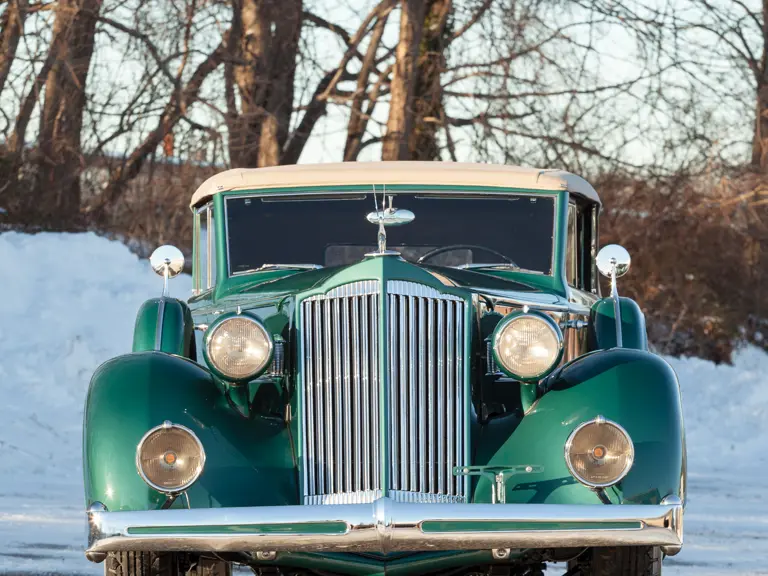

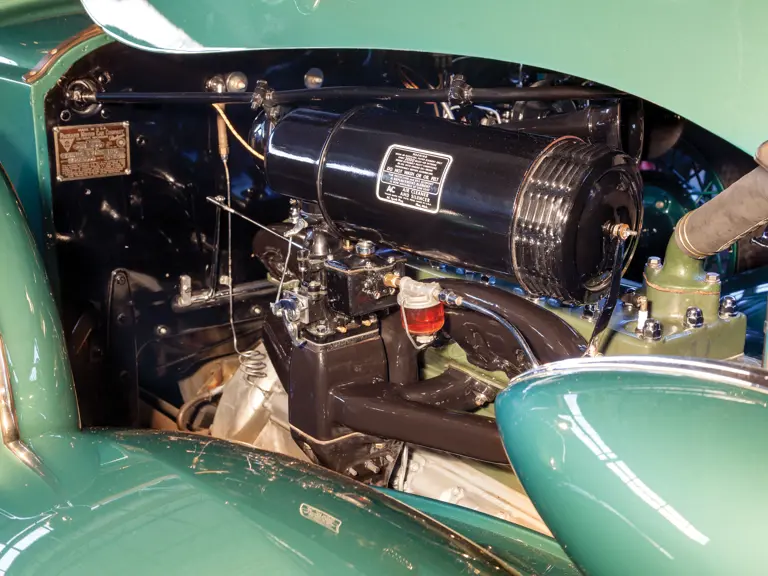
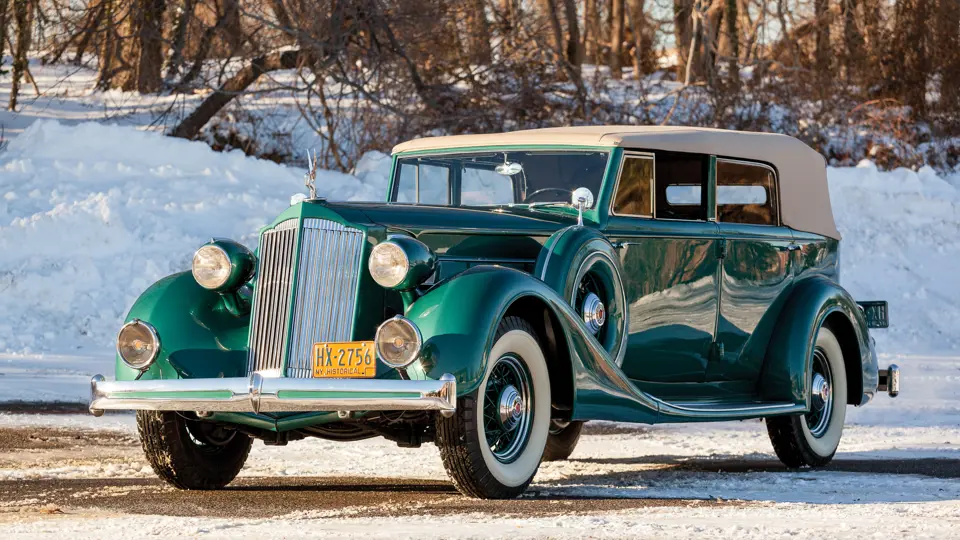
 | Amelia Island, Florida
| Amelia Island, Florida
